My favorite part of teaching first grade is teaching kids to read! That fuzzy feeling we get inside when a student finally recognizes a word or can sound it out without help is just incredible! And I know I’m not alone in this feeling, right?
But as I tell my students, reading the words is the “easy” part of reading. It’s reading with fluency and actually understanding what you’ve read that is a whole lot trickier! {More on comprehension in a later post!}
Today, I’m sharing some favorite ideas for building fluency in beginning readers.
Read, Read, and Read Some More!

Encourage reading ALL day long! From morning message to the date to the directions on your math sheet. True, students need to hear fluent models {which is why we do read-aloud!} but they also need to be given LOTS of opportunities to try reading on their own!
Help Students Master Sight Words!

Whether you call them Sight Words, Snap Words, High-Frequency Words, or some other cute name to remind your students of these words, the high-frequency words are essential for early reading success.
It is estimated that 80% of the words that first graders read are Sight Words! Isn’t that crazy??
And as we know, Sight Words can’t just be “stretched” out! Help your students master these foundational words to set them up for reading success.
In my class, we use Superhero Sight Words to master those all-important words. This self-paced program motivates students to master small sets of words before moving on.
You can read more about how I’ve set up Superhero Sight Word Readers for my own class here. I’ve included an editable version so you can change the words to fit your classroom!
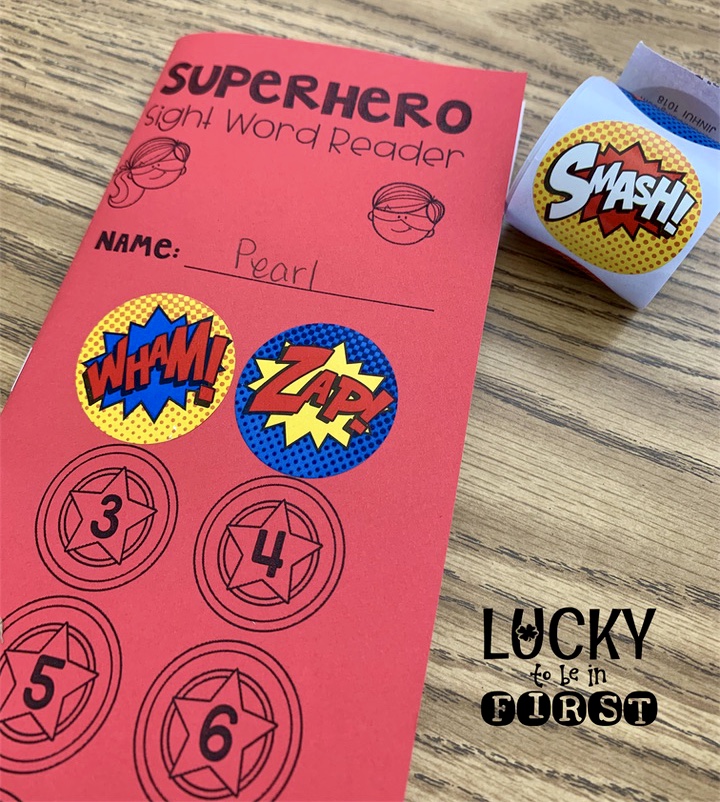
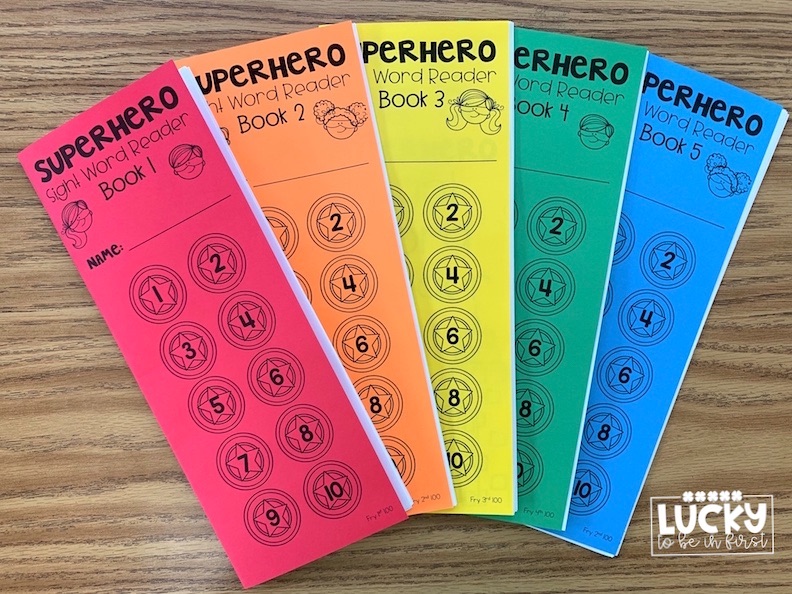
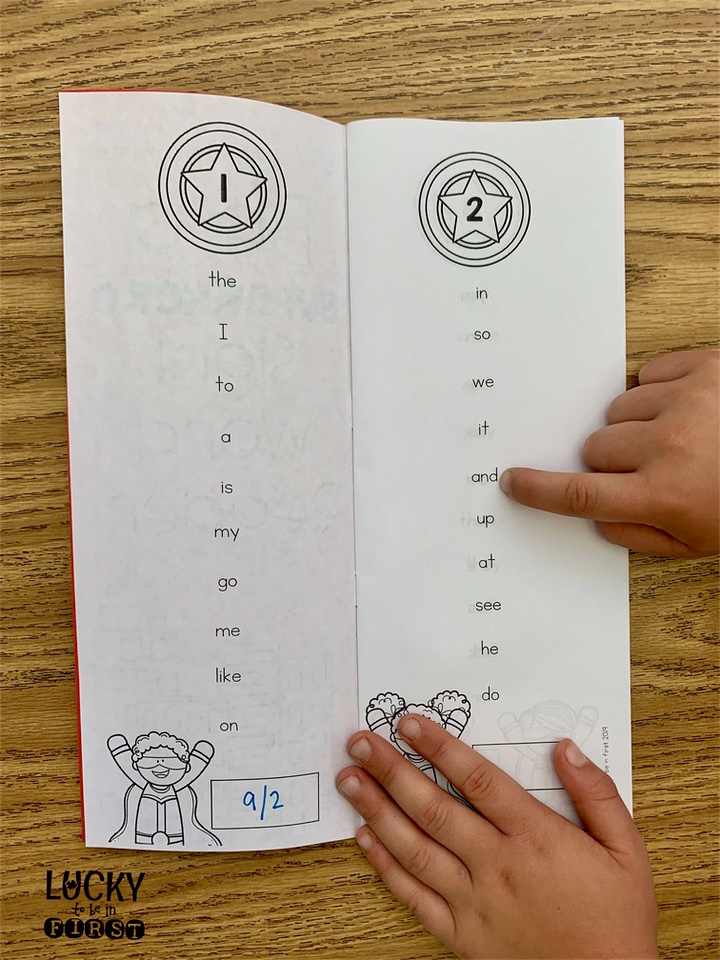
A Text Heavy Classroom & Library

The best way for students to become interested in words is to expose them to words!
A Full Library
Fill your library with books of all levels and interests. Years ago, I bought these sturdy plastic boxes from Big Lots. They are WELL worth the money!
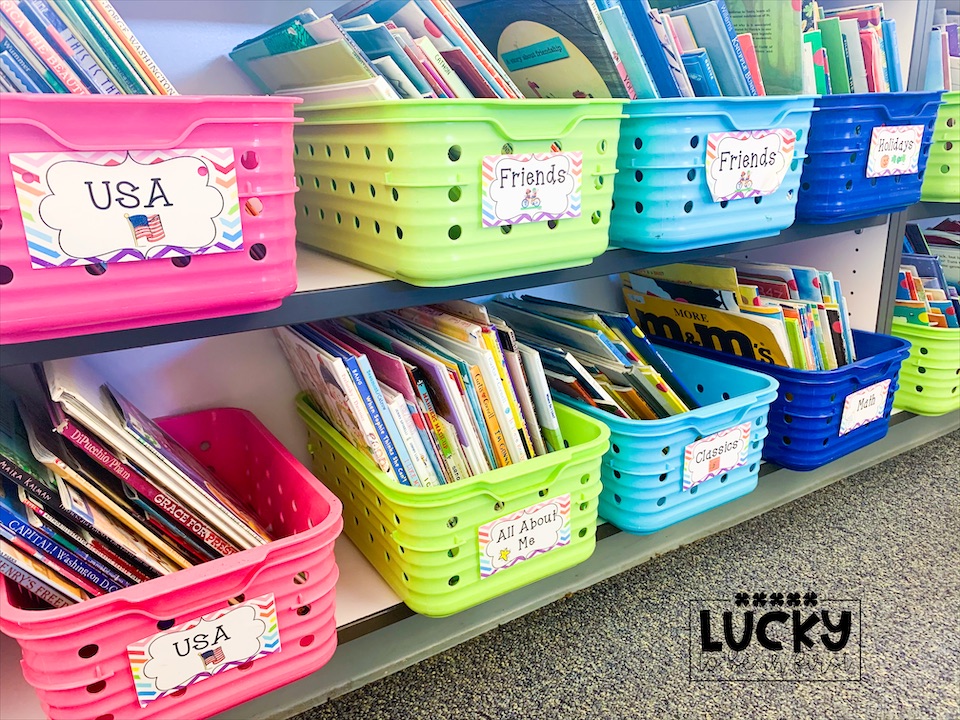
To keep our classroom library organized, I just slap a sticker on the cover of each book that matches the library bucket. {I made these SO long ago so the graphics could use an update ;)}
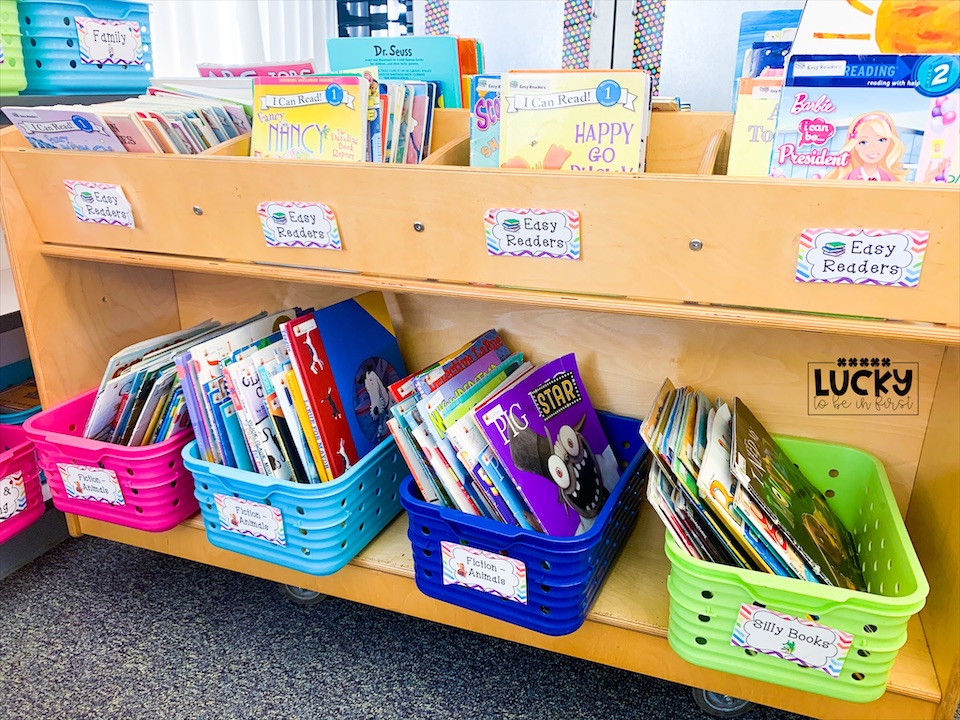
I have worked hard to fill my classroom with books that students are interested in! Once again, use those Scholastic Bonus Points to order a few books each month!
Label All the Things!
Add labels around your classroom to name the objects. I just printed them out and seriously labeled everything!
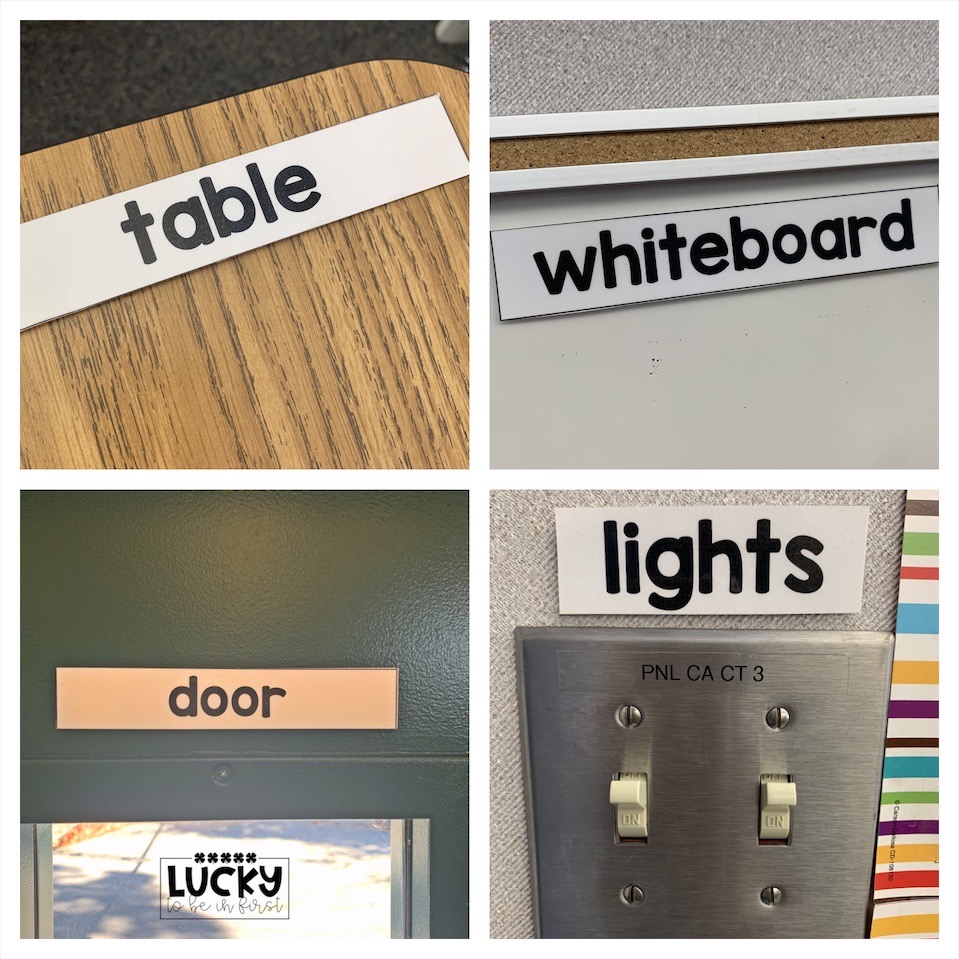
Word Wall
Hang a word wall or use a Word Wall on the Go!
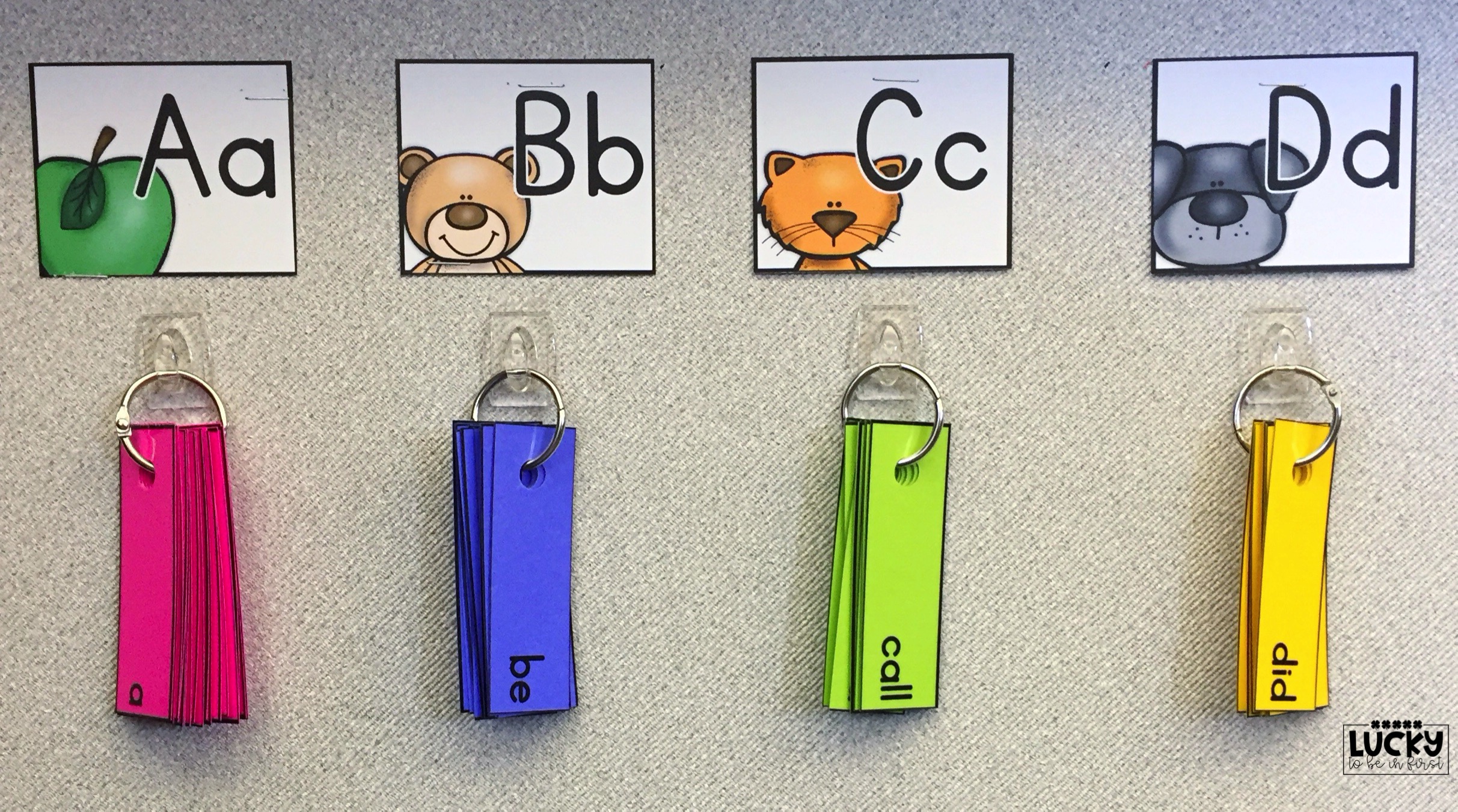
The more students are exposed to words, the more they’ll start connecting that words are everywhere and words mean something! For our Word Wall on the Go, students can walk up to the wall and grab the ring of words they need. If they can’t find the word on their own, I’ll help point it out for them.
Go Shopping for Books!
In my classroom, the students each have a Book Box filled with books at their level. They “shop” for books weekly from the drawers of leveled books I’ve collected over the years. {Each month I use my Scholastic Bonus Points and coupons to buy several books at various levels. Pro tip: buy a ton in your first book order of the year so you can max out your points and get a HUGE bonus!}
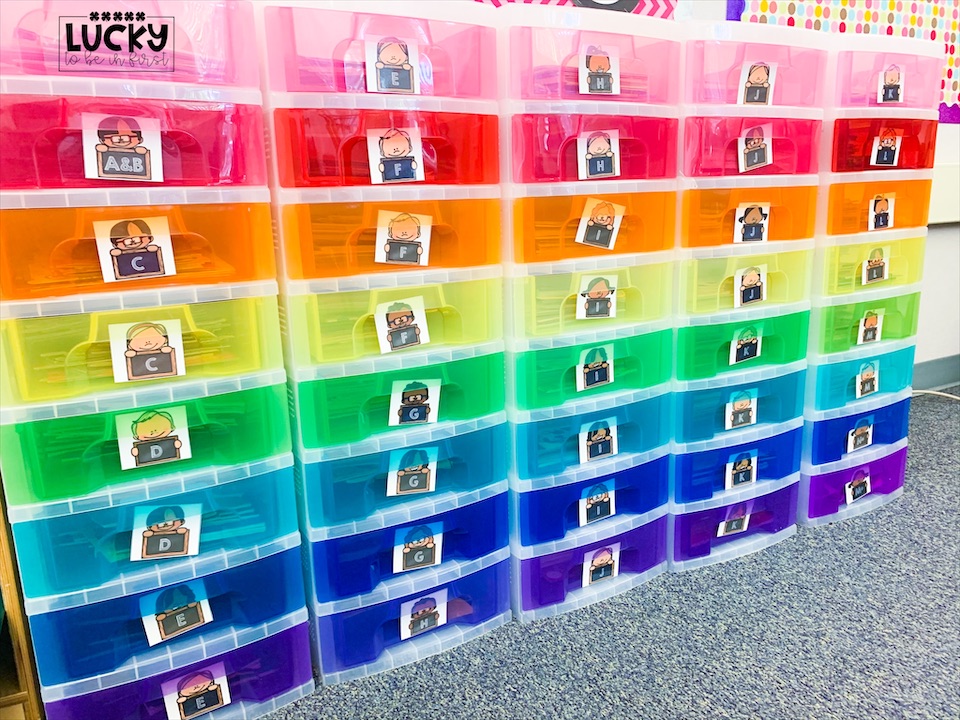
The drawers are filled with leveled books and students know which drawer to pick from. Each week they can grab a few new books or choose to keep the books they have already in their boxes.
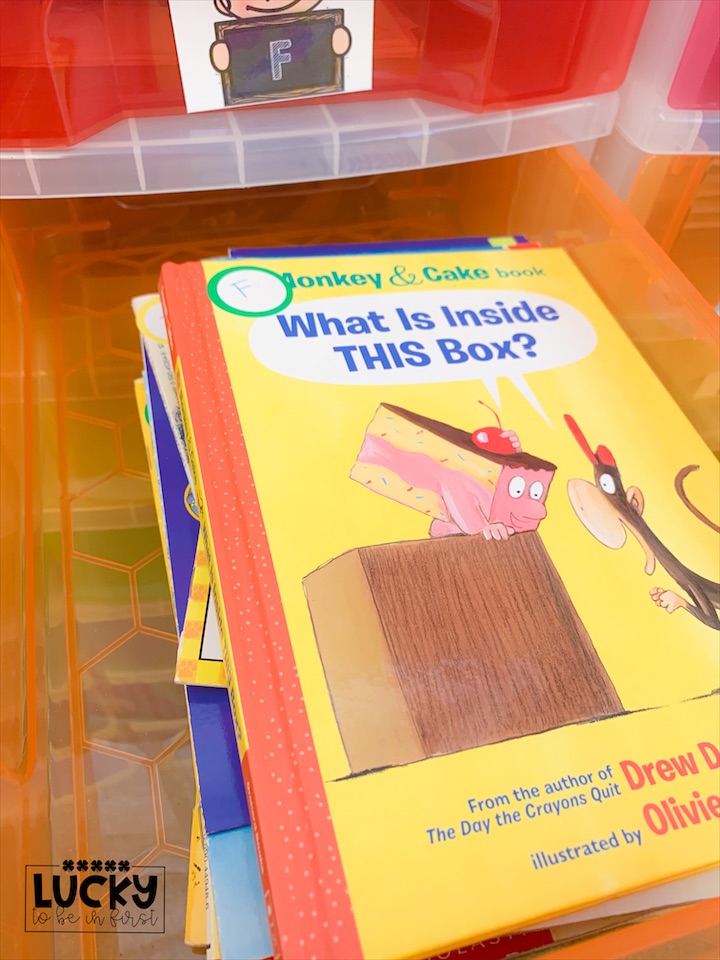
To keep track of the book levels, I use small labels and write the Guided Reading Library in the upper corner. I could write the level on the inside cover or the back cover but I also have a leveled Guided Reading Library that I use to work in small groups with my kids. Since they also put these books inside of their book box, having these labels makes it easier when we’re emptying when our boxes. The kids know to put the “sticker’ books back inside of the drawers!
TIP: Also, grab all those random books that teacher friends leave on the staff room table! A few books here and there start to add up to a rad leveled library.
I’ll be honest that when I first started book boxes, I filled ’em up with books for the kids because it was quick! But then it dawned on me that students had no choice in the process and were less likely to read for an extended period of time! Lesson learned 🙂 Now they pick what they want to read!
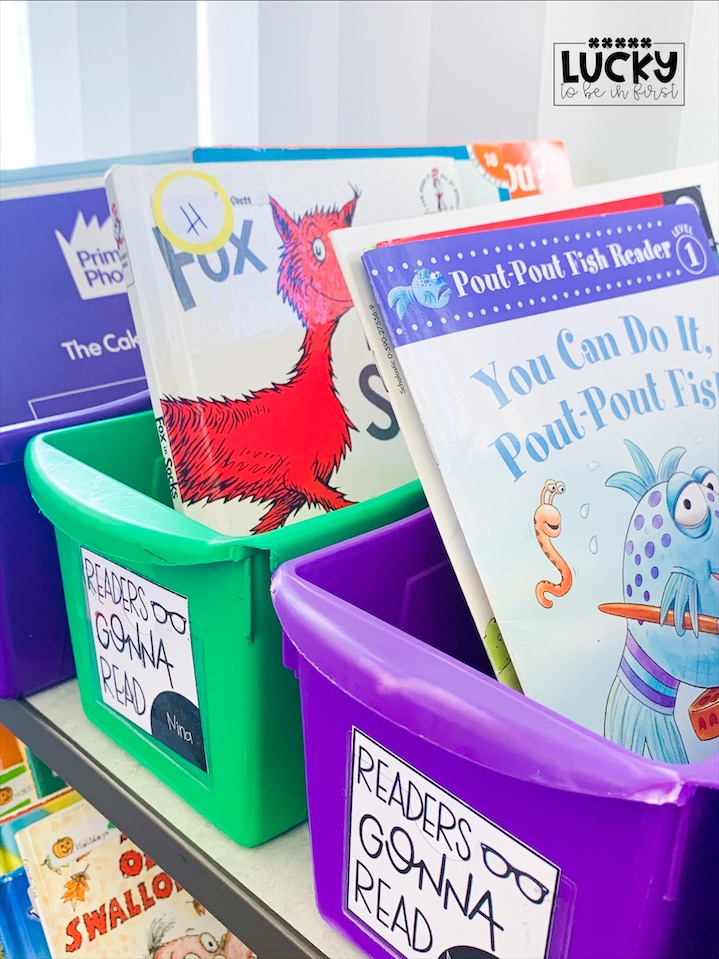
Fluency Cards

If your students start to get bored re-reading the text, make it fun! This year we started using Fluency Cards to re-read stories. Kids can’t get enough of these silly voices!
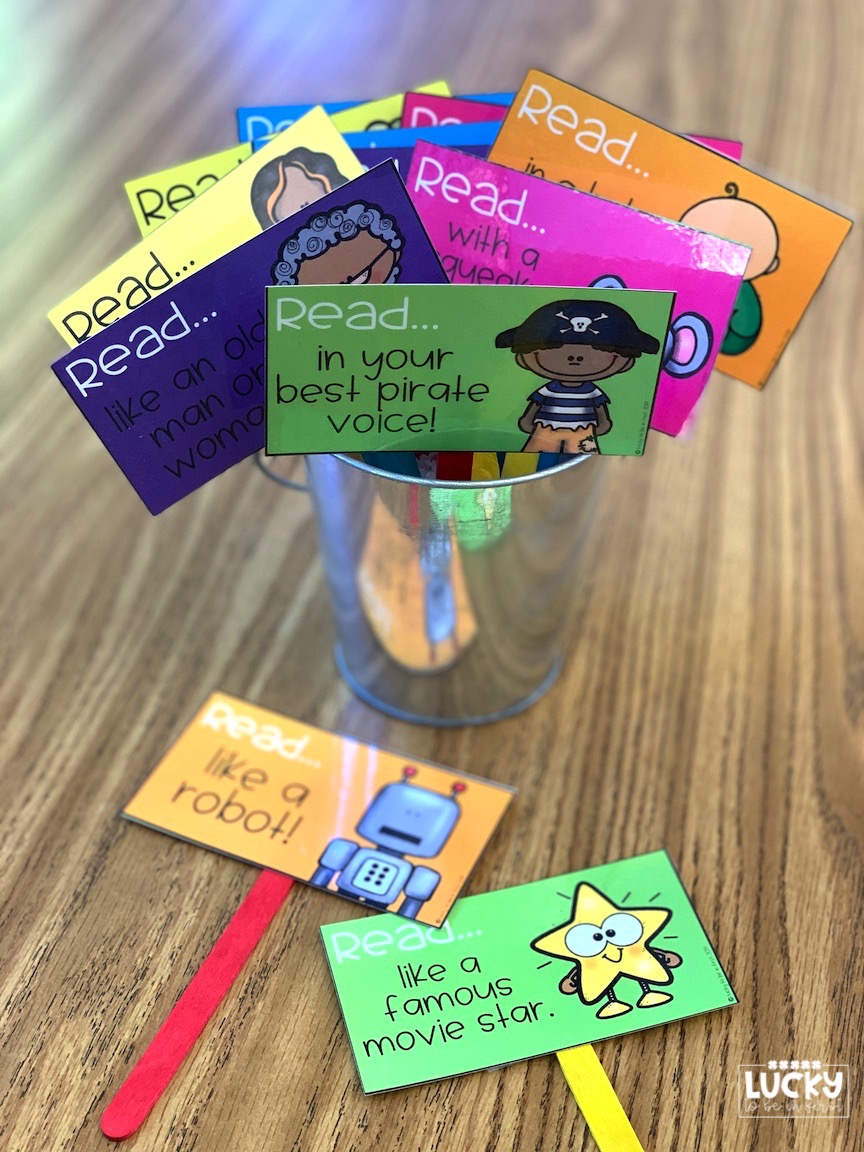
Students simply pick a card and read the text using that funky voice! I’ve included a black and white friendly version, too 🙂
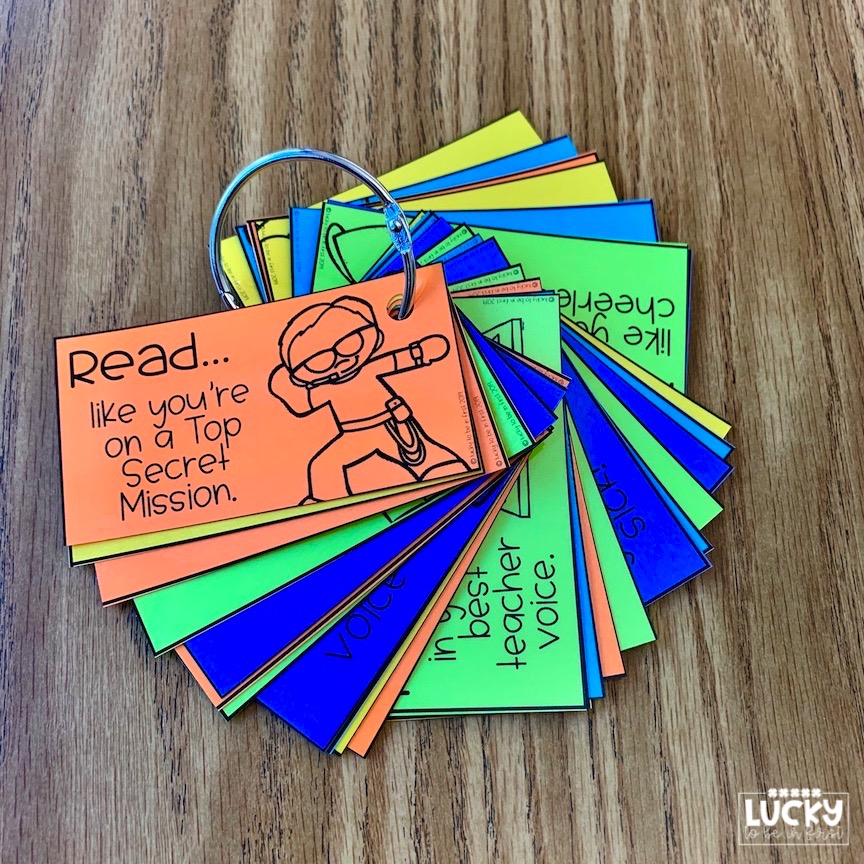
“Tools” to Build Fluency

Most adults don’t love to hear their own voices. Not the case for young children! They love to hear {and see!} themselves!
Turn that excitement/narcissistic behavior into an activity to help build fluency with these ideas!
Whisper Phones
Whisper phones are an inexpensive tool that you should definitely add to your classroom if you haven’t already! Children read softly into the phone while listening to the clarity and rhythm of their words. Whisper phones offer instant feedback so they can adjust the rate at which they read or fix things that don’t sound right!
There are tons of options available on Amazon or you can make your own quite easily!
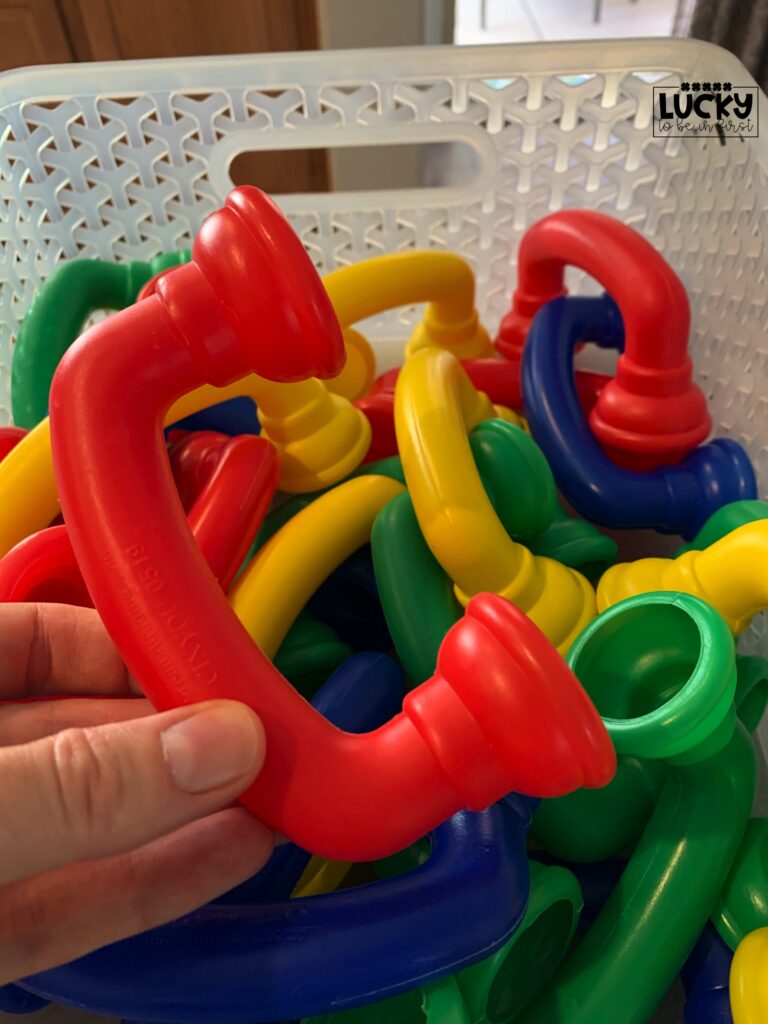
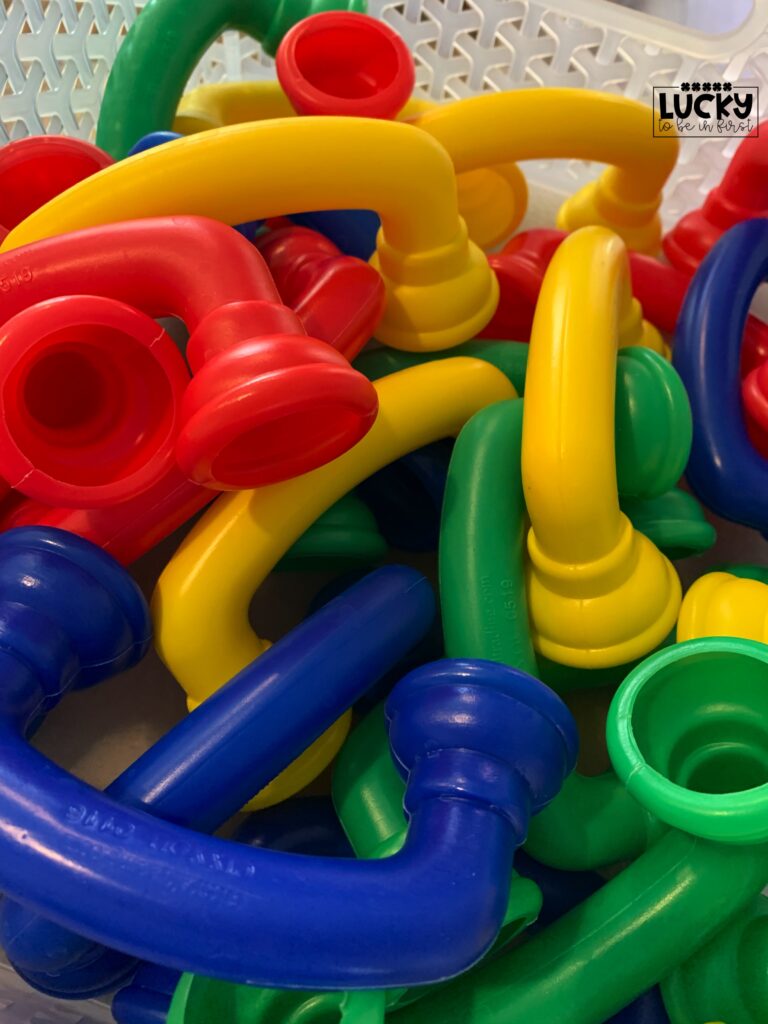
Keep Time
The easiest way to measure fluency is to keep time of how long it takes a student to read a passage. Some reading assessments actually set a fluency goal that students need to reach in order to pass to the next level.
To help students build faster fluency, pull out a timer for a pair of students. They can each take turns reading a short passage and keeping track of how long it takes to read through.
To start, I usually pull out a short passage and encourage the students to do repeated timed readings. They’ll read the passage a few times and {hopefully!} increase the number of words read each time.
I also ask parents to encourage their children to time themselves reading at home too!
You can find inexpensive timers at the dollar store but I would suggest a timer that counts up and back {which is helpful during Smart Cookie time or assessment time!}

Let Students Record Their Voice
One of the best ways for students to understand fluency is to actually hear how they sound!
There are tons of fancy-schmancy apps that will do it, but I just have my students do it with the Voice Memos App on our classroom iPads.
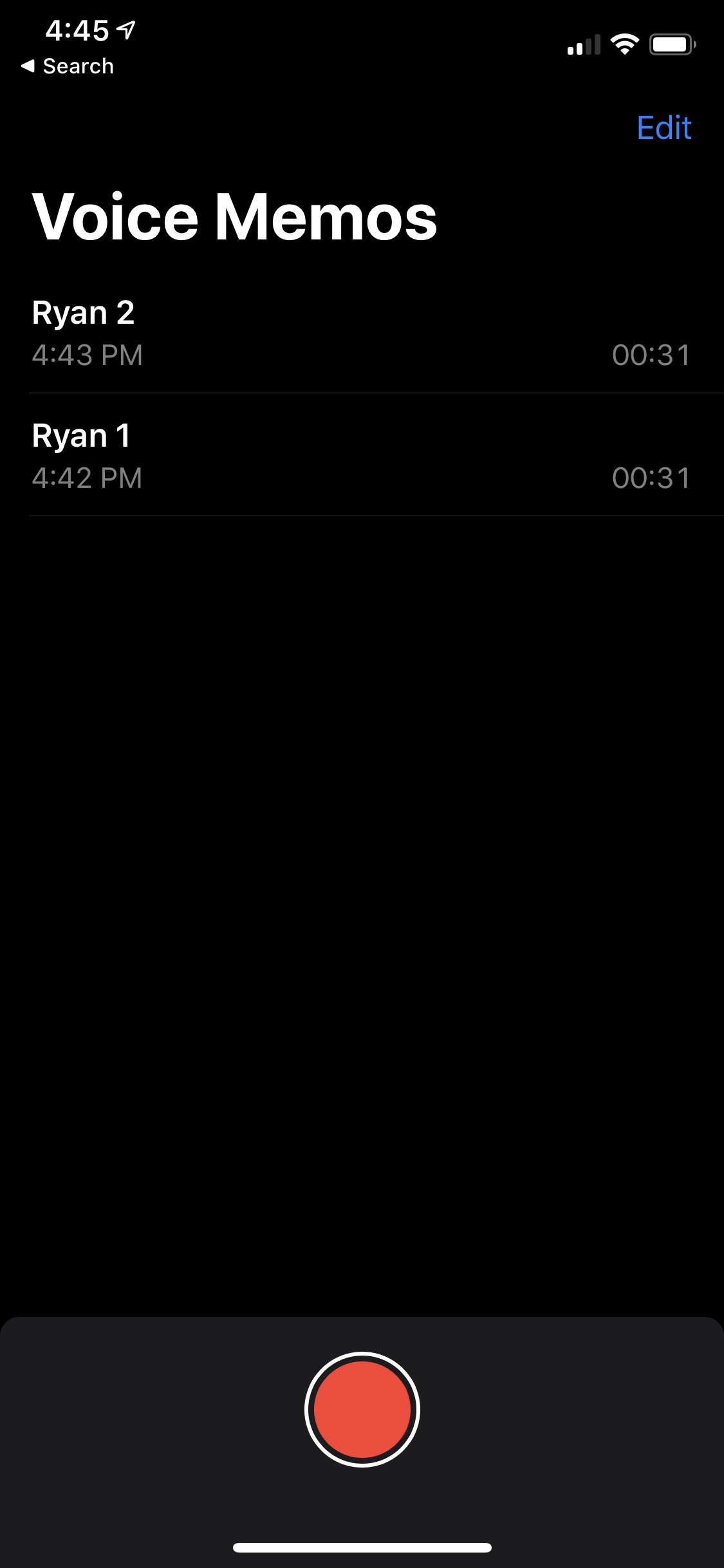
They select a short passage and read it once. Then read it again. And read it again! They listen to the their recordings and critique it after listening to all three recordings. For a little fun, they can rename the video clip.
To begin, I would suggest modeling for your students how to do this by walking them through each step as if you were the student trying to practice. Make your first attempt slow, your next attempt a little faster {or even too fast!} and your third attempt just right. Then, play it back and verbally give yourself some kudos and suggestions each time you play the recording.
If your students use RAZ Kids, they can actually record the reading of a text right in the app. They LOVE that feature! Again, you’ll need to walk the students through the how of this feature {take my word for it!}
Storytime
Have you seen these amazing series, “You Read to Me, I’ll Read to You?” These are fantastic books to use one-on-one with students {or to suggest to your families to snag at the library}
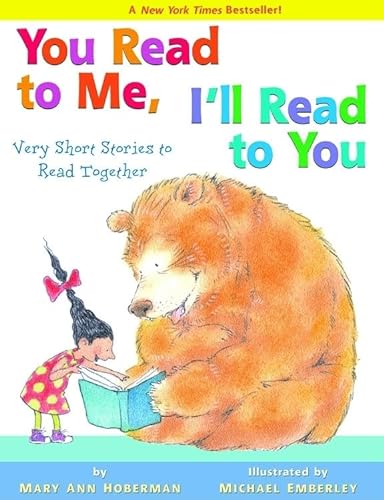
They are super short stories that a give you {or a parent!} a chance to be a fluent model…but then give the child a chance to read. Kids love these!
Fluency Bookmarks
It’s important for students to learn to constantly check their own fluency. Is it too slow? Too fast? Did I pay attention to the punctuation?
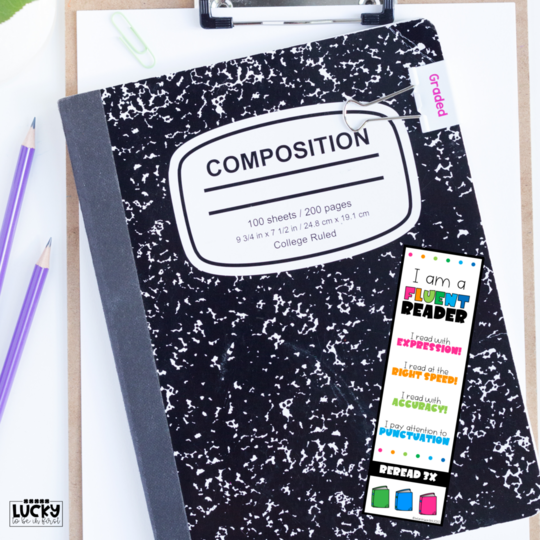
Print off these FREE bookmarks for each student. As with all new strategies, you’ll want to walk your students through just how to use this helpful tool!
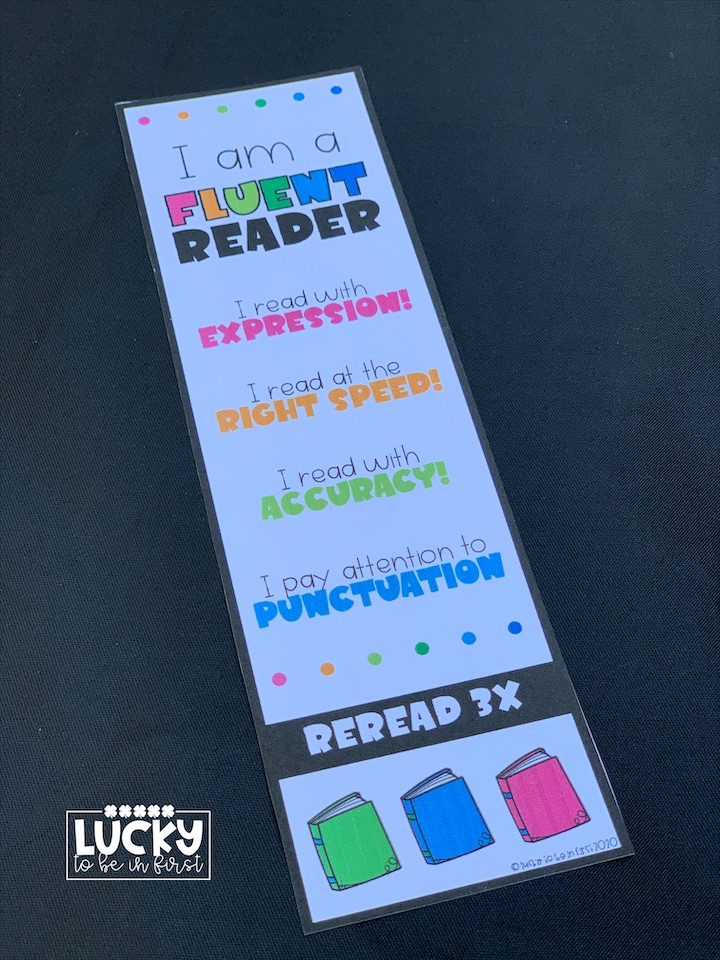
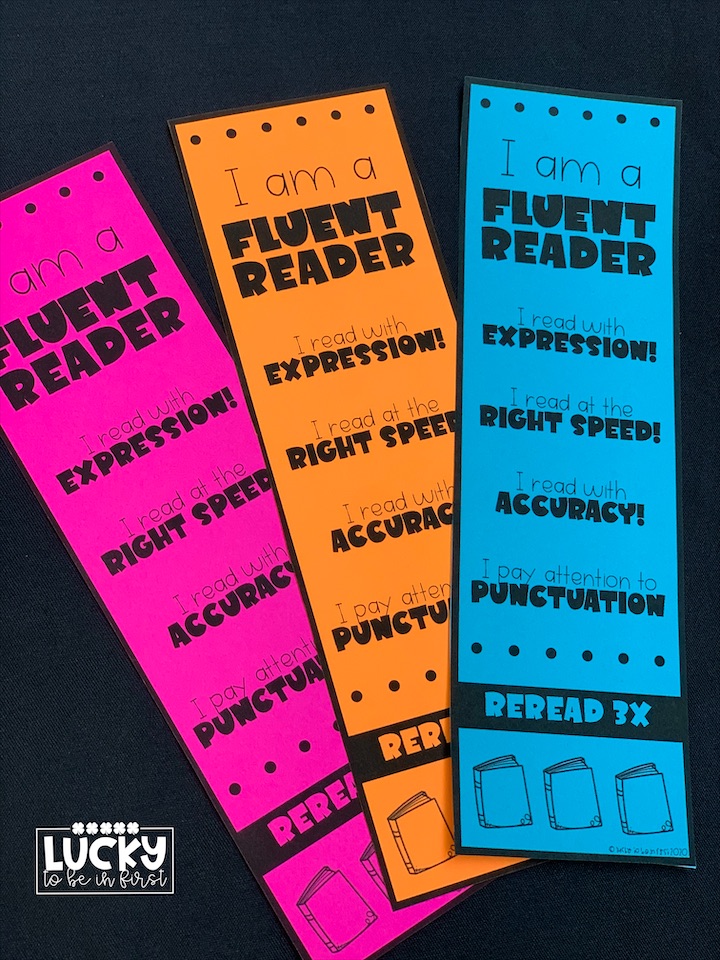
Do you have any fabulous ideas to build fluency in your early readers?
Related Product: 20 Printable Reading Bookmarks for Students
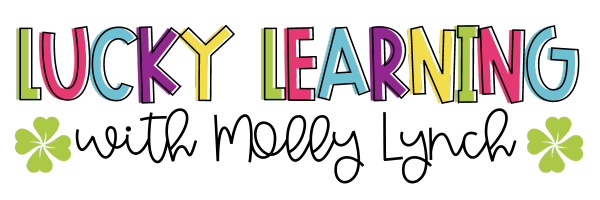

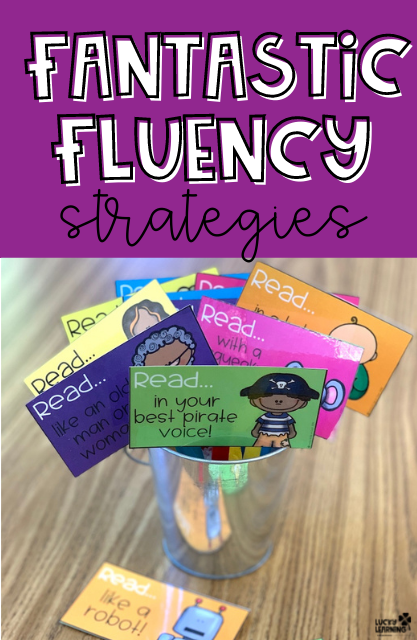
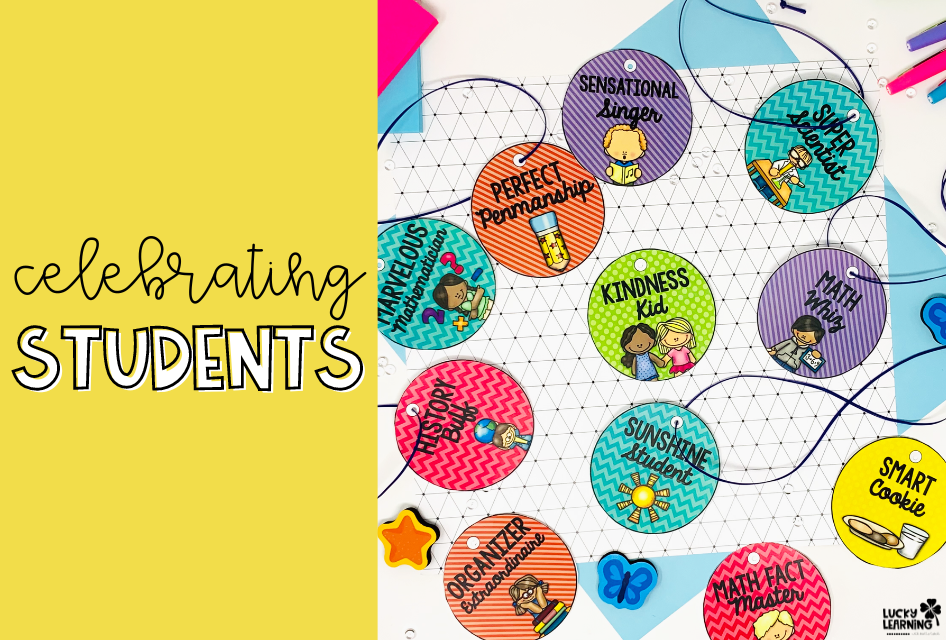
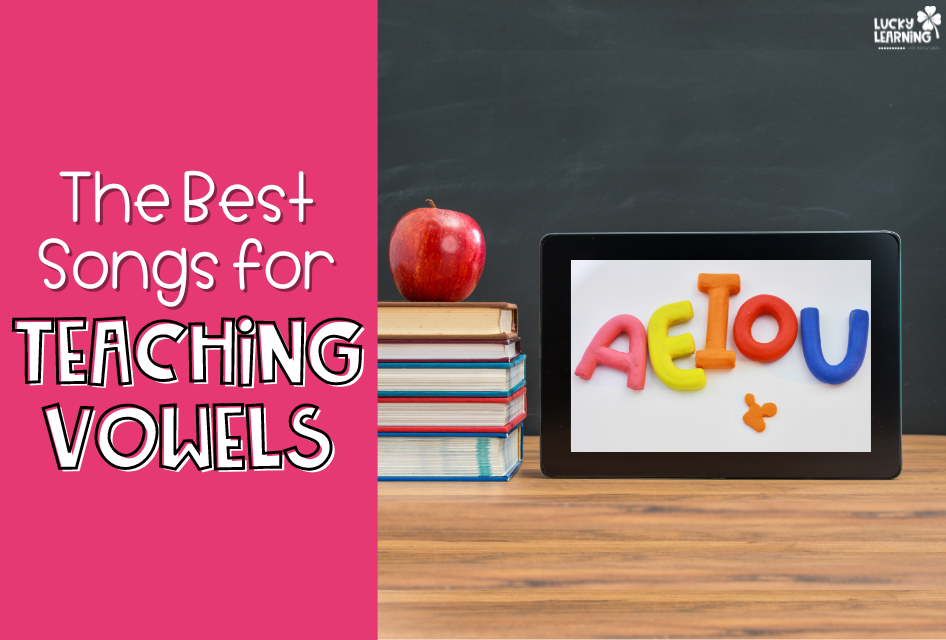
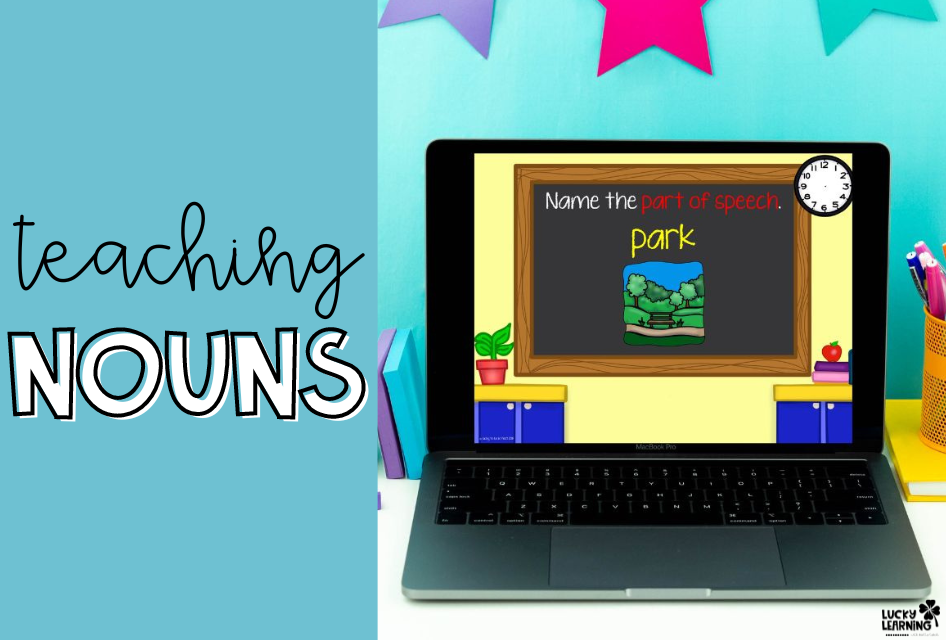

2 Responses
Thank you for all the helpful tips in this article!! I’m excited to try these ideas.